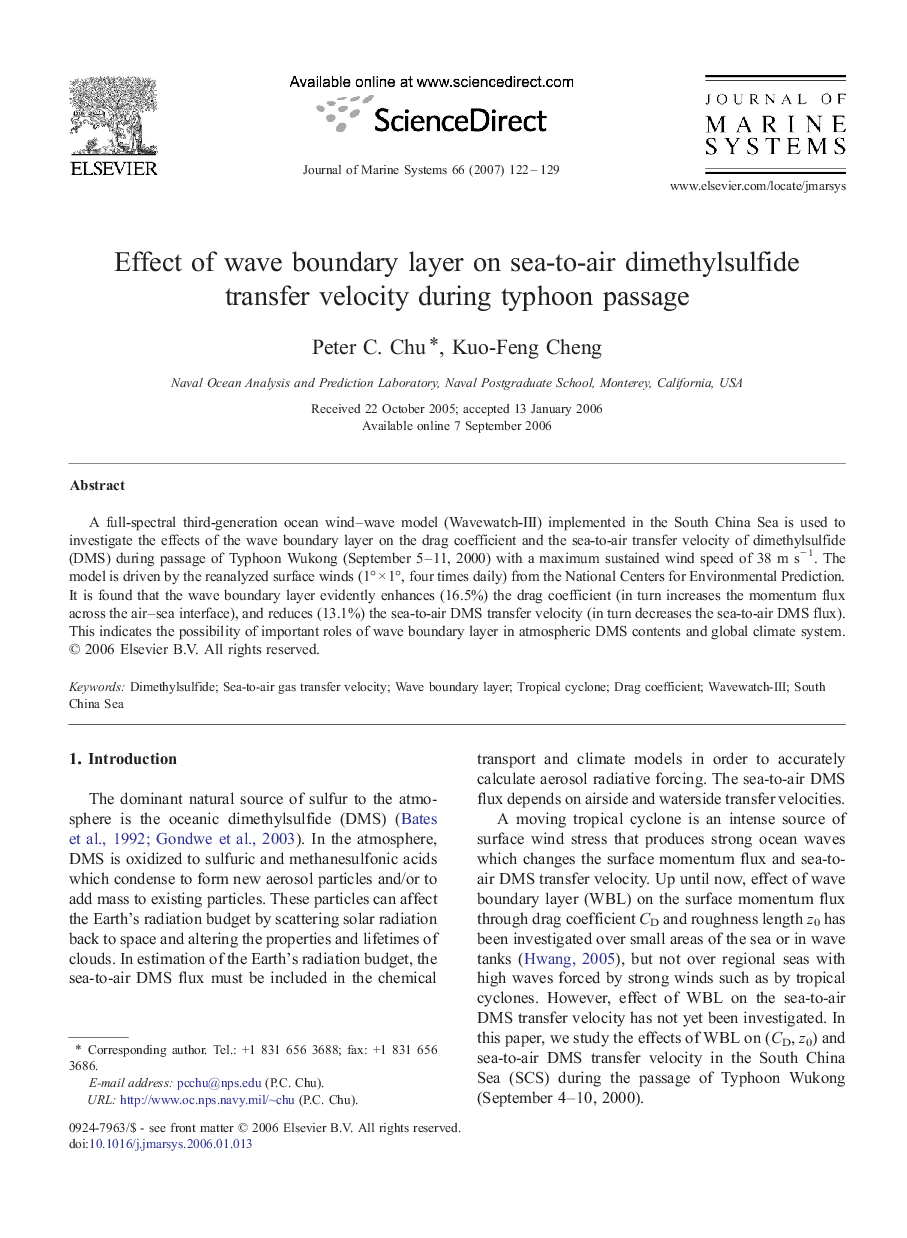| Article ID | Journal | Published Year | Pages | File Type |
|---|---|---|---|---|
| 4549342 | Journal of Marine Systems | 2007 | 8 Pages |
A full-spectral third-generation ocean wind–wave model (Wavewatch-III) implemented in the South China Sea is used to investigate the effects of the wave boundary layer on the drag coefficient and the sea-to-air transfer velocity of dimethylsulfide (DMS) during passage of Typhoon Wukong (September 5–11, 2000) with a maximum sustained wind speed of 38 m s− 1. The model is driven by the reanalyzed surface winds (1° × 1°, four times daily) from the National Centers for Environmental Prediction. It is found that the wave boundary layer evidently enhances (16.5%) the drag coefficient (in turn increases the momentum flux across the air–sea interface), and reduces (13.1%) the sea-to-air DMS transfer velocity (in turn decreases the sea-to-air DMS flux). This indicates the possibility of important roles of wave boundary layer in atmospheric DMS contents and global climate system.
